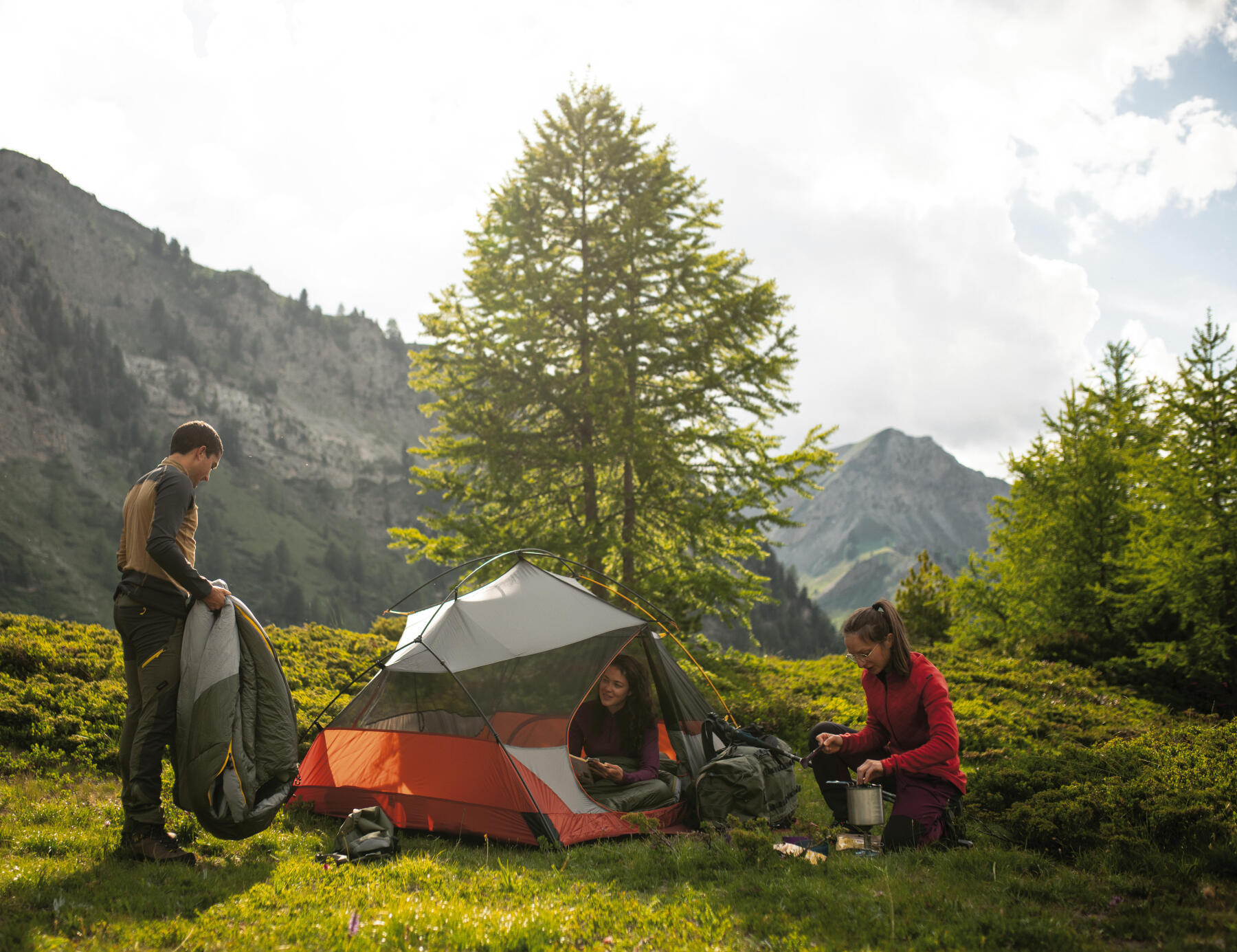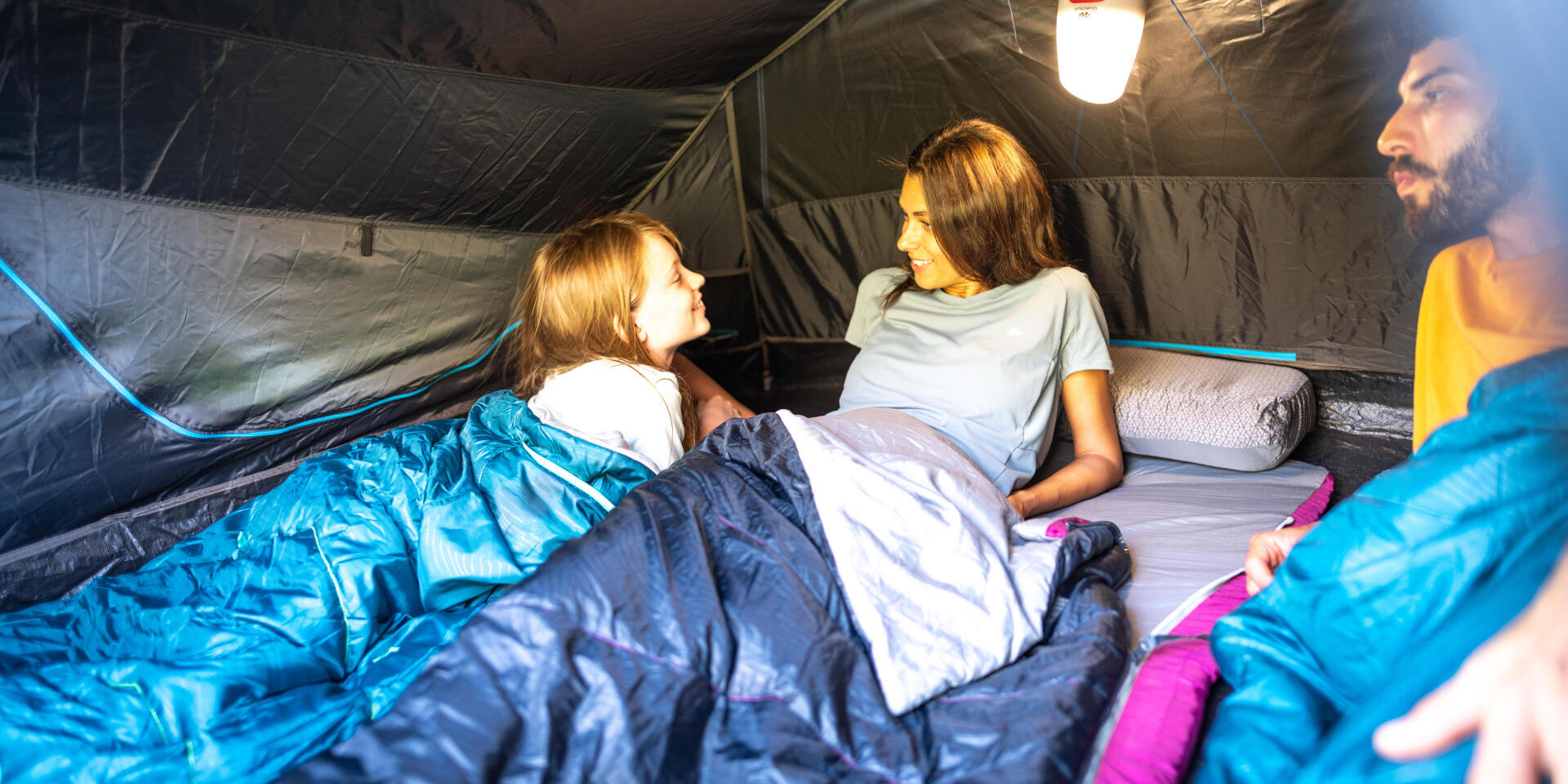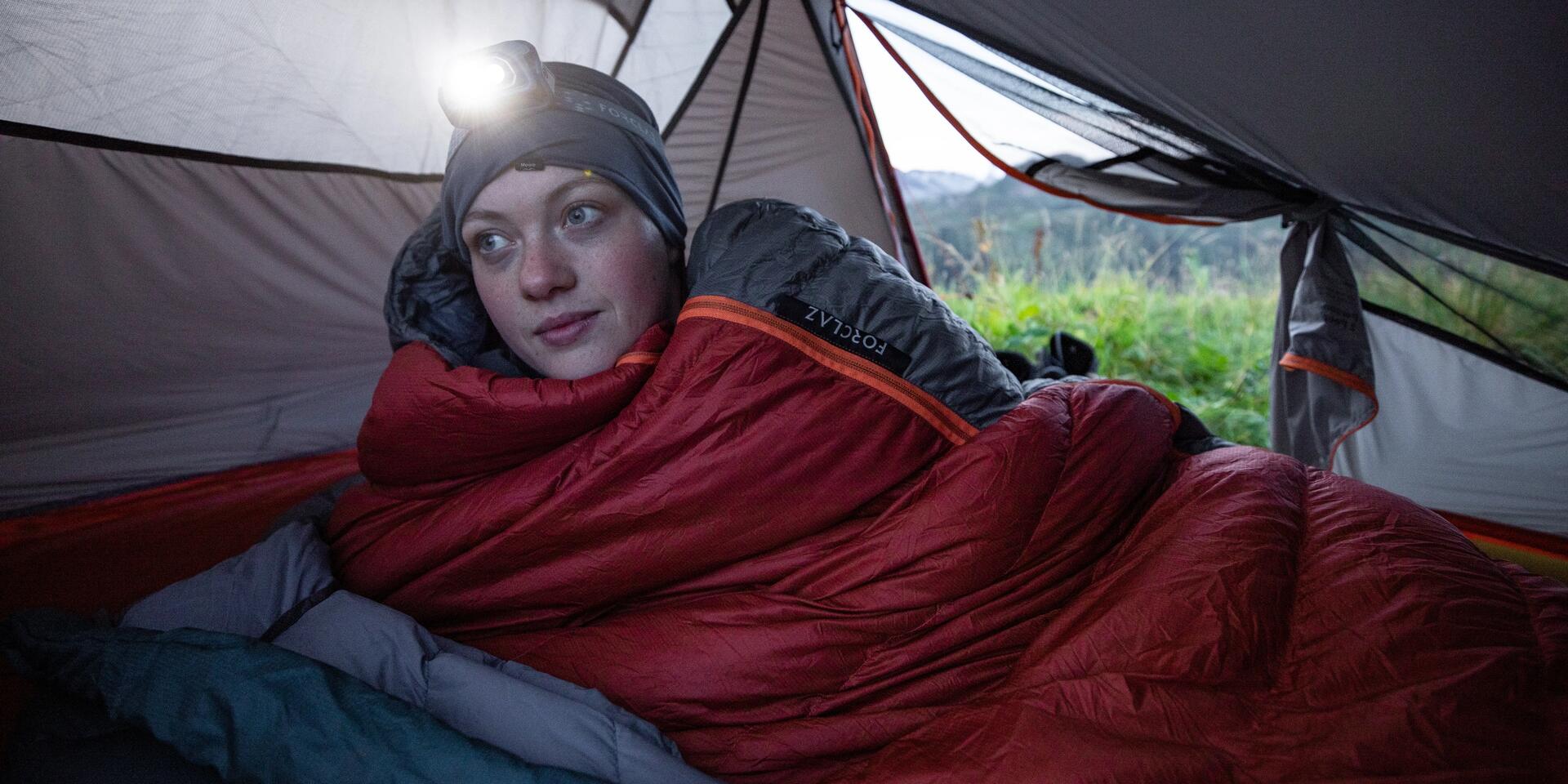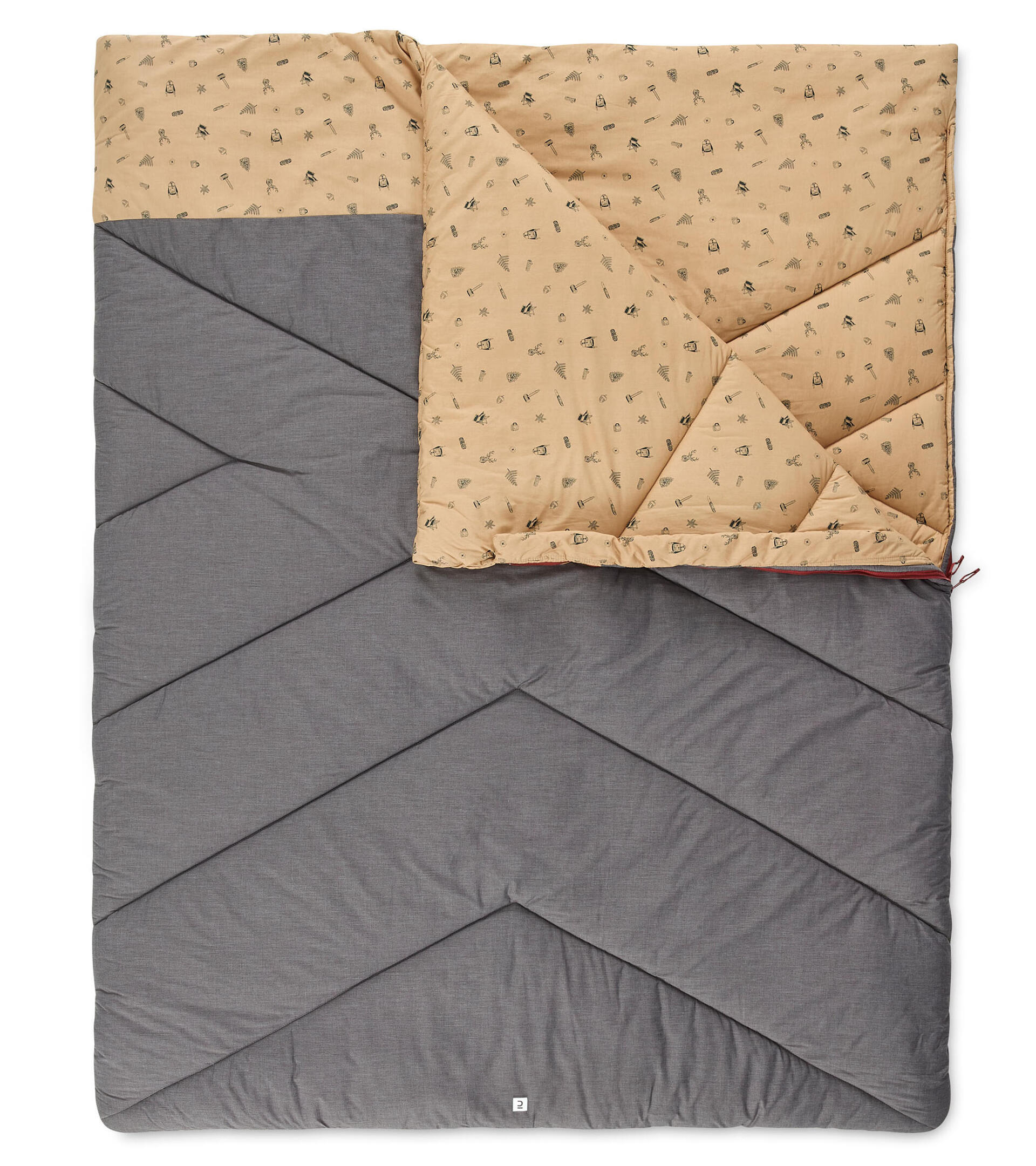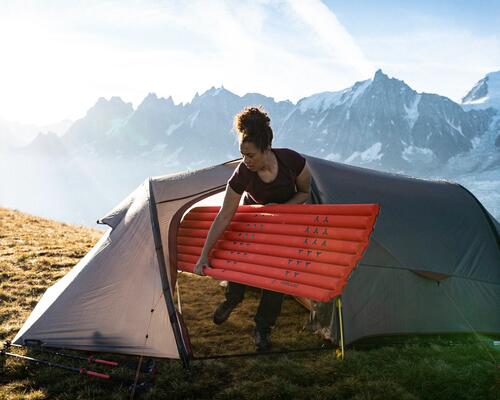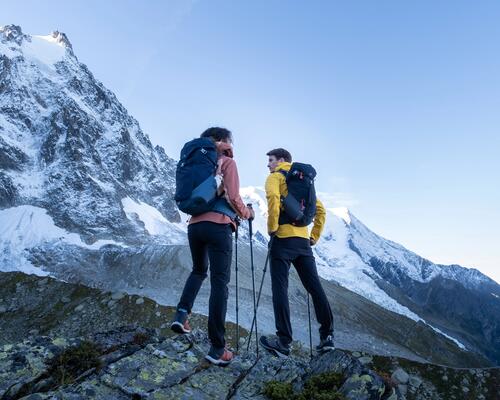THE SLEEPING BAG: YOUR BEST ALLY WHEN CAMPING AND BIVOUACKING IN THE MOUNTAINS
When you go on holiday and opt for an overnight camping or bivouac trip, it is essential to be well equipped. Whatever the season, temperatures can drop drastically in the mountains once the sun goes down, even in summer. It is therefore essential to have a sleeping bag that will keep you warm all year round.
A sleeping bag that is poorly chosen in terms of filling, size or shape can greatly degrade the quality of your sleeping comfort. It may make you too warm or not provide the necessary warmth, which may affect your sleep. However, on a multi-day trip, it is essential to be well rested so that you can walk for hours without feeling tired. In this guide, we help you make the right choice so that you can bivouac and camp freely.

